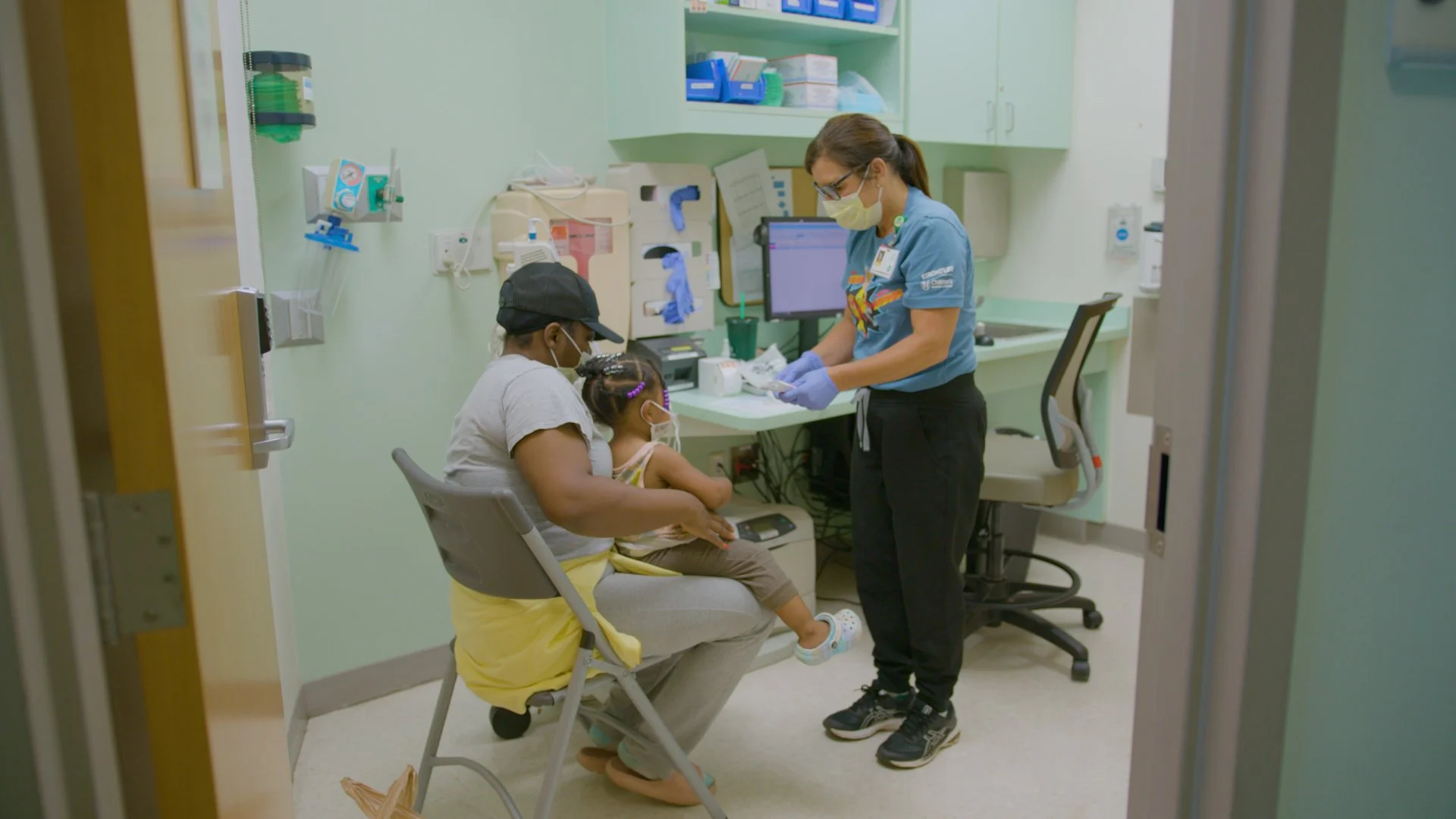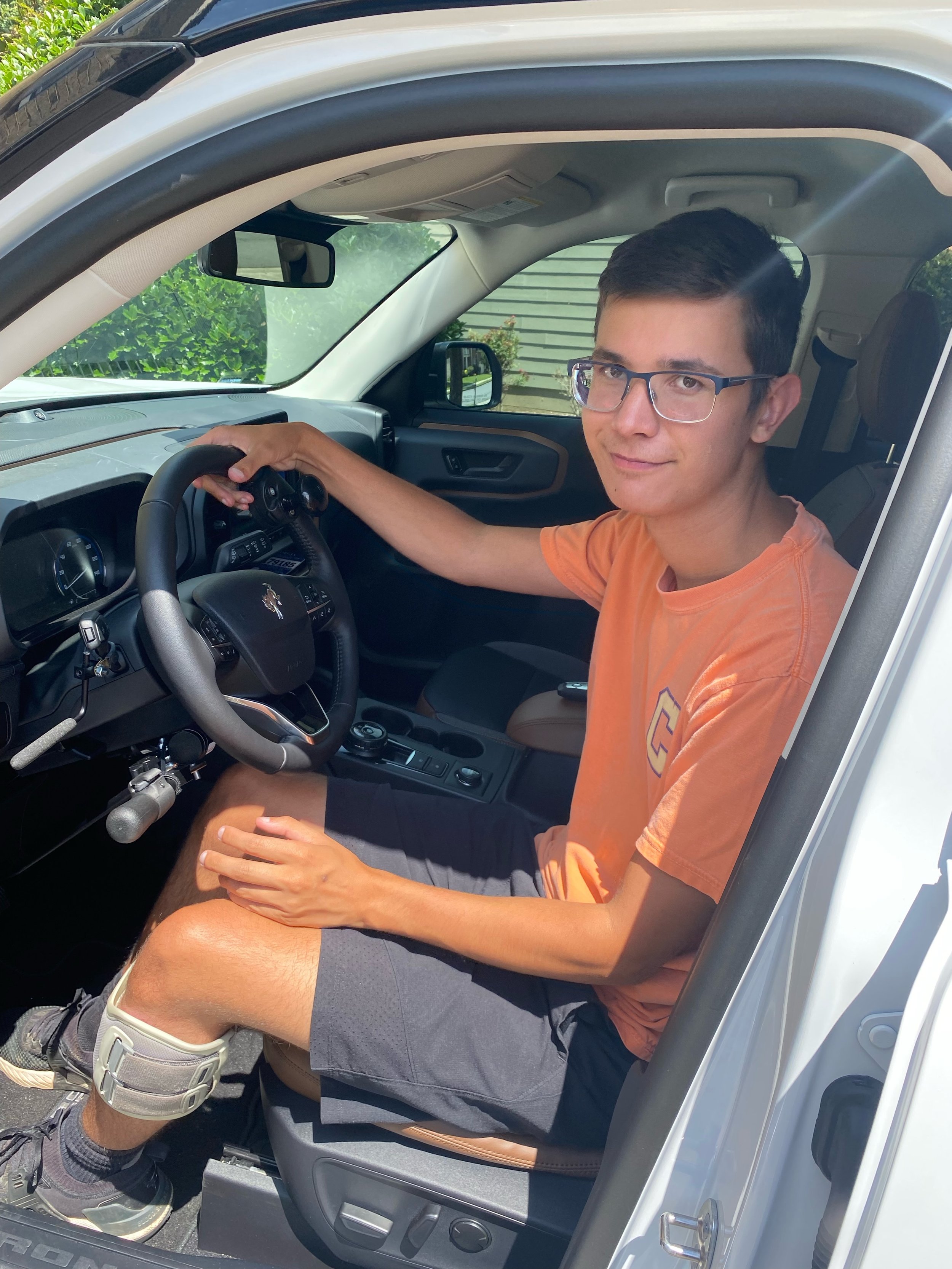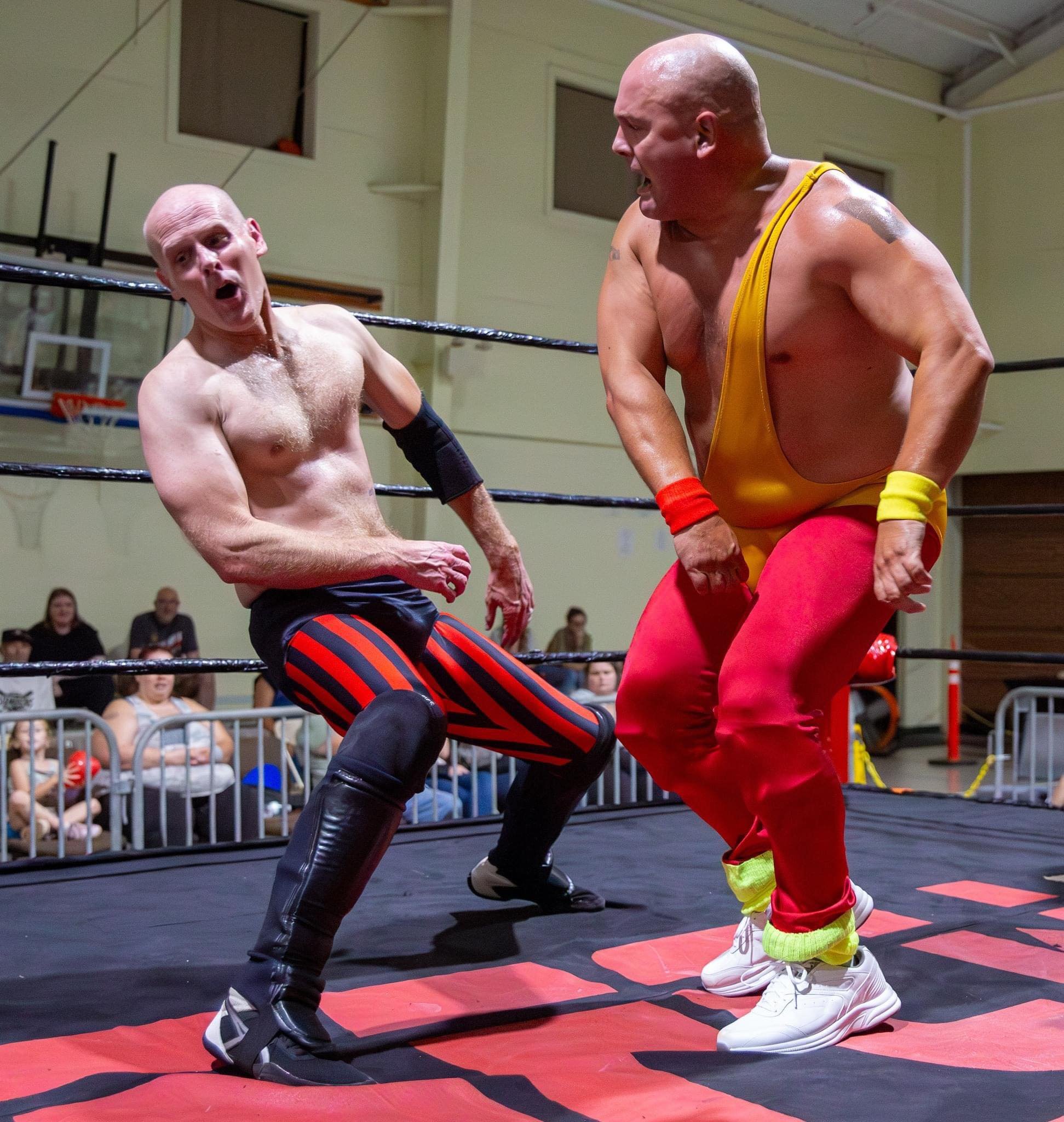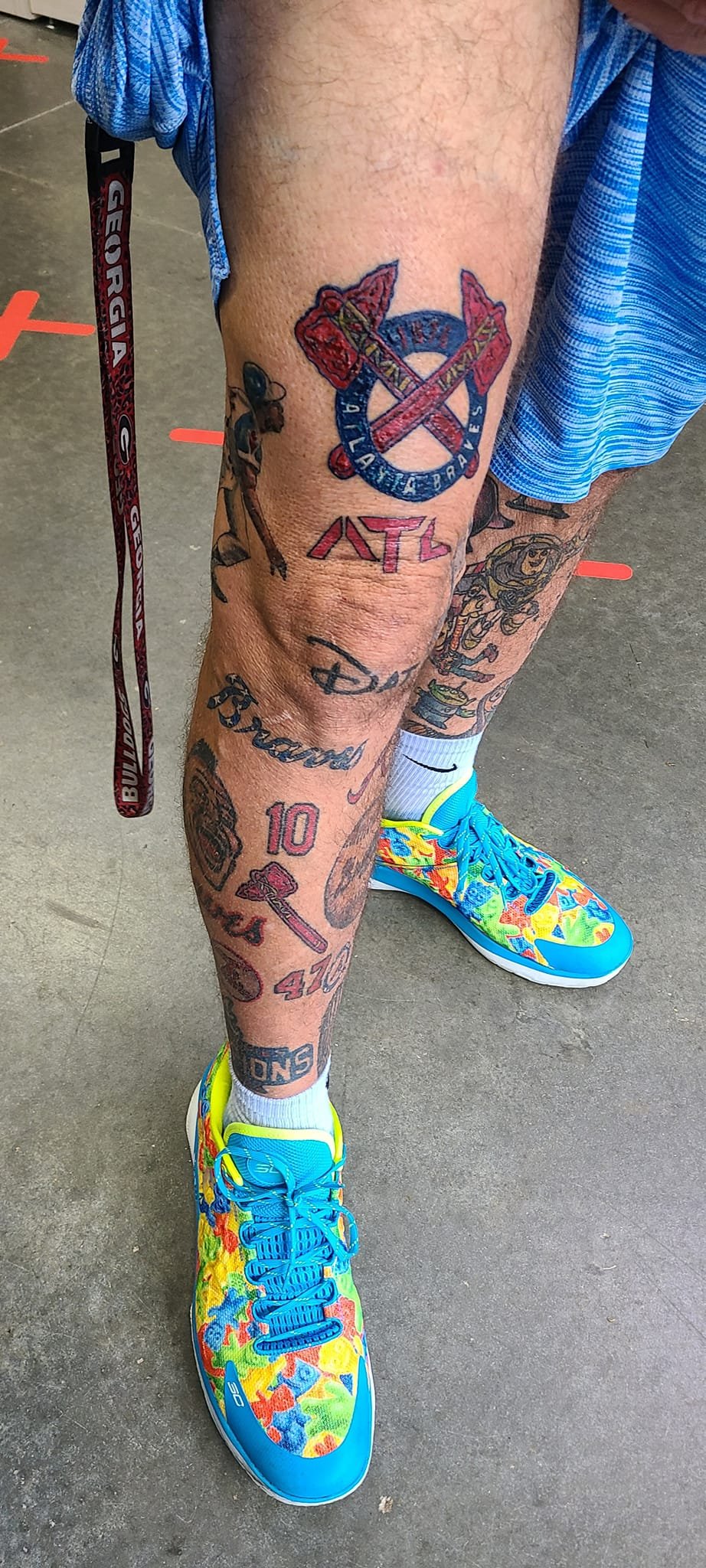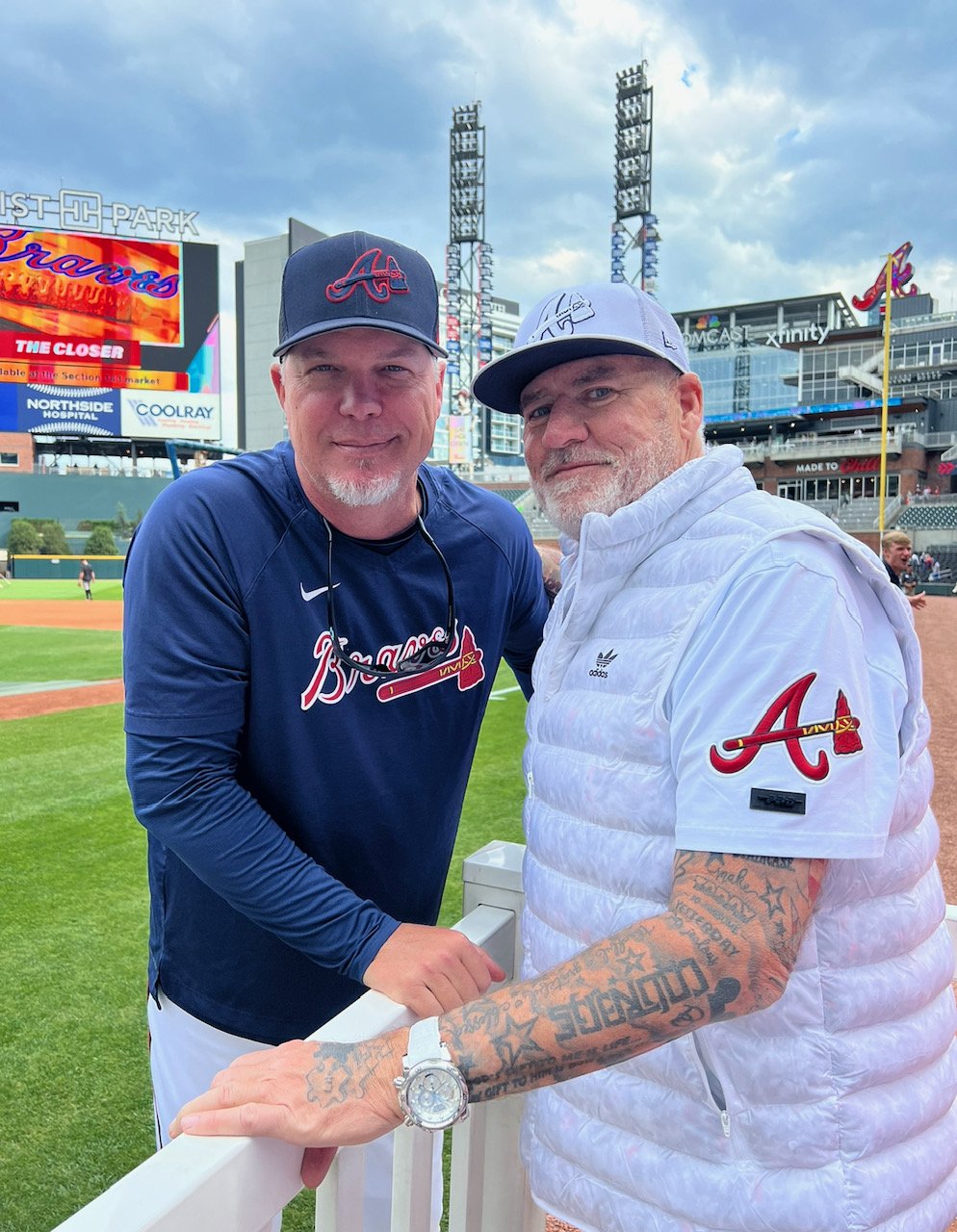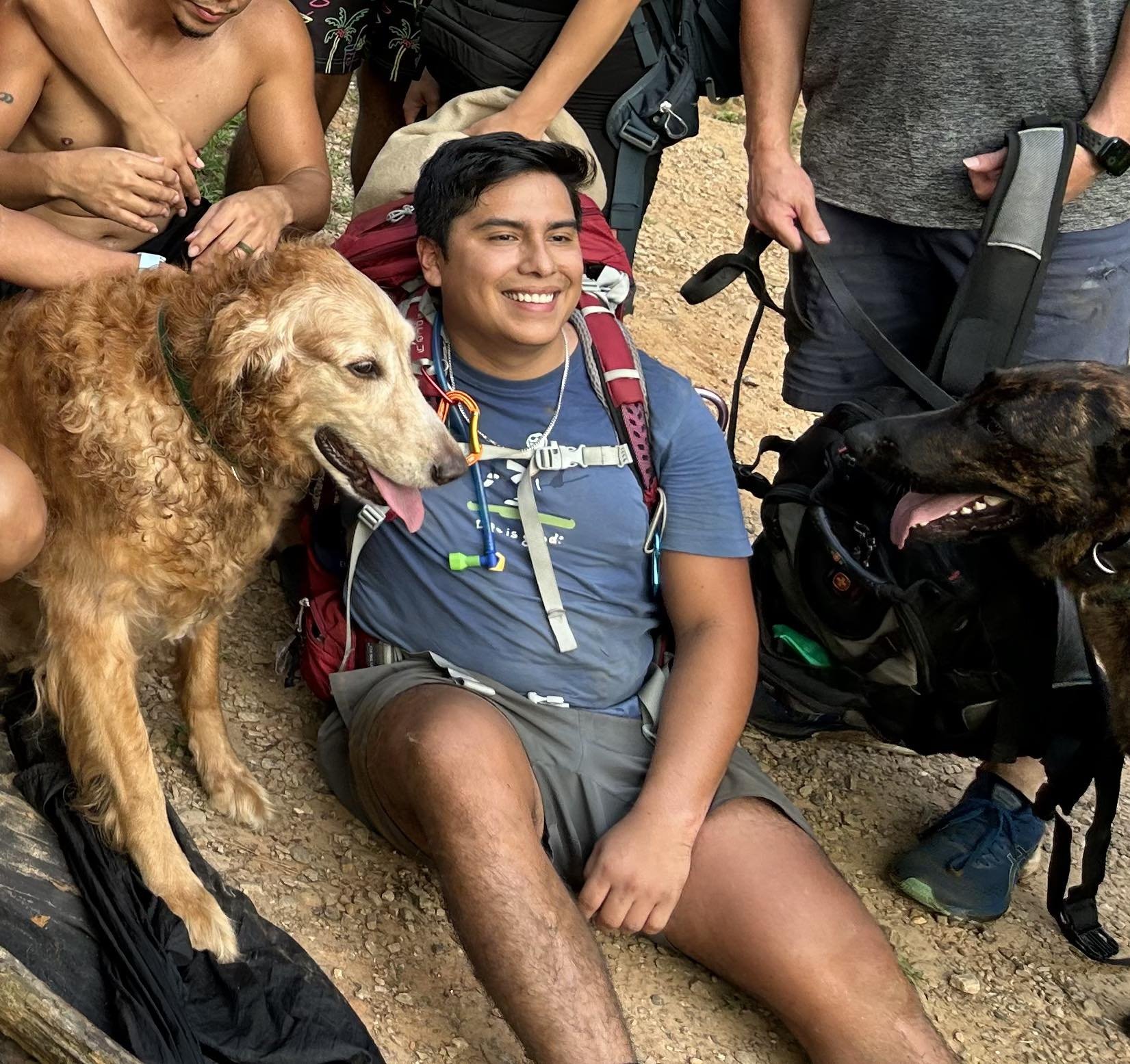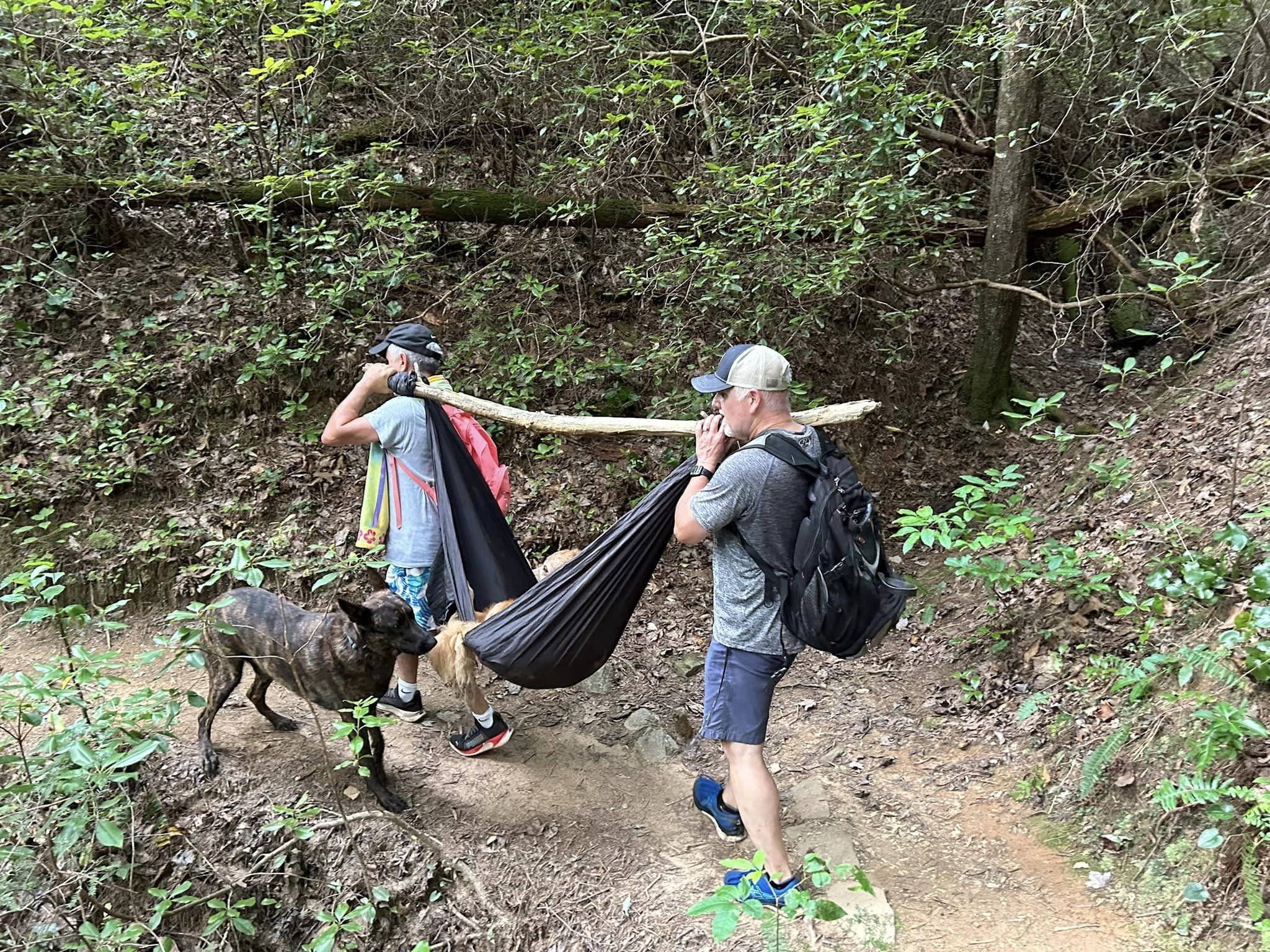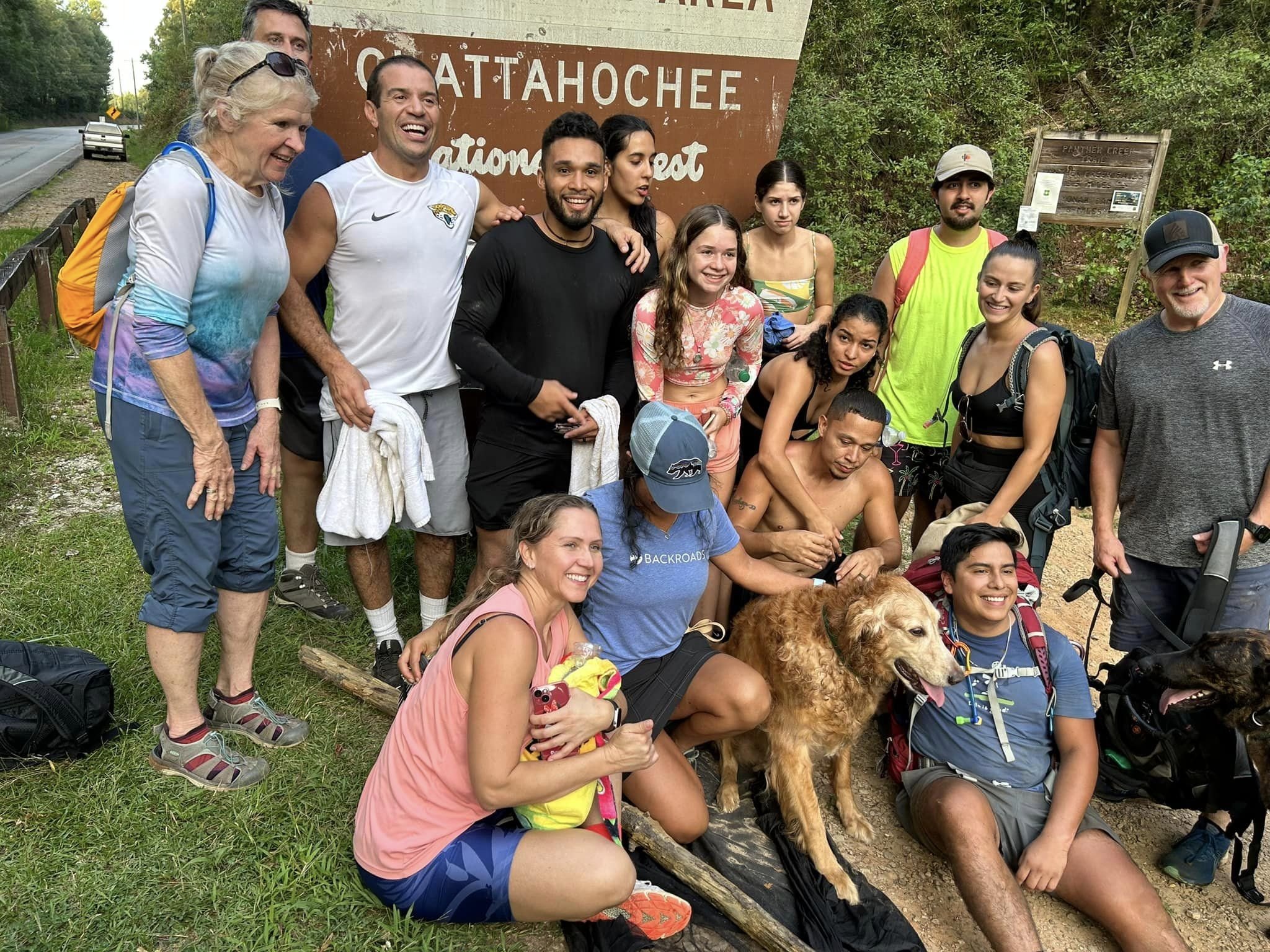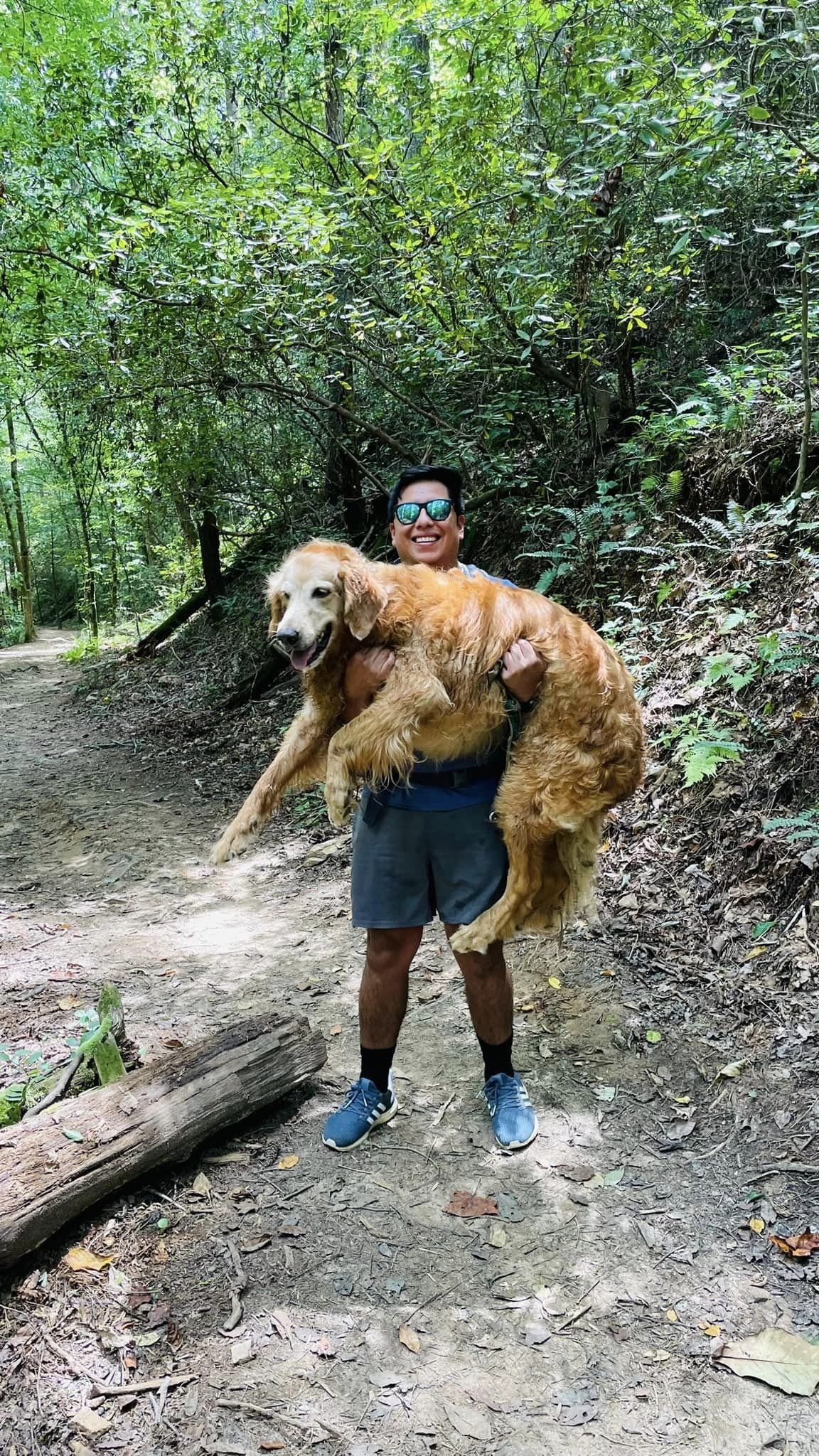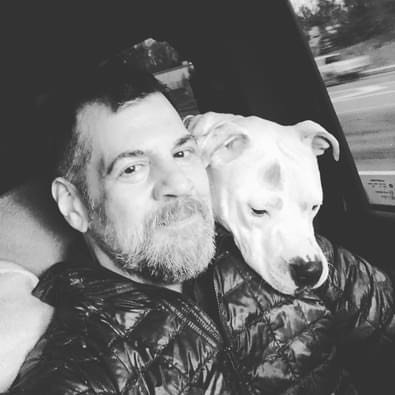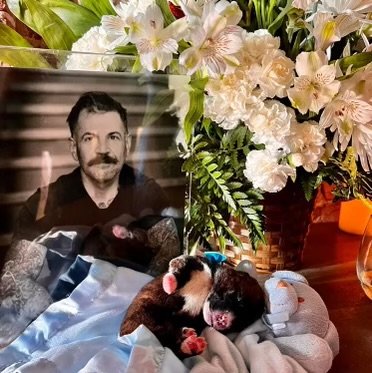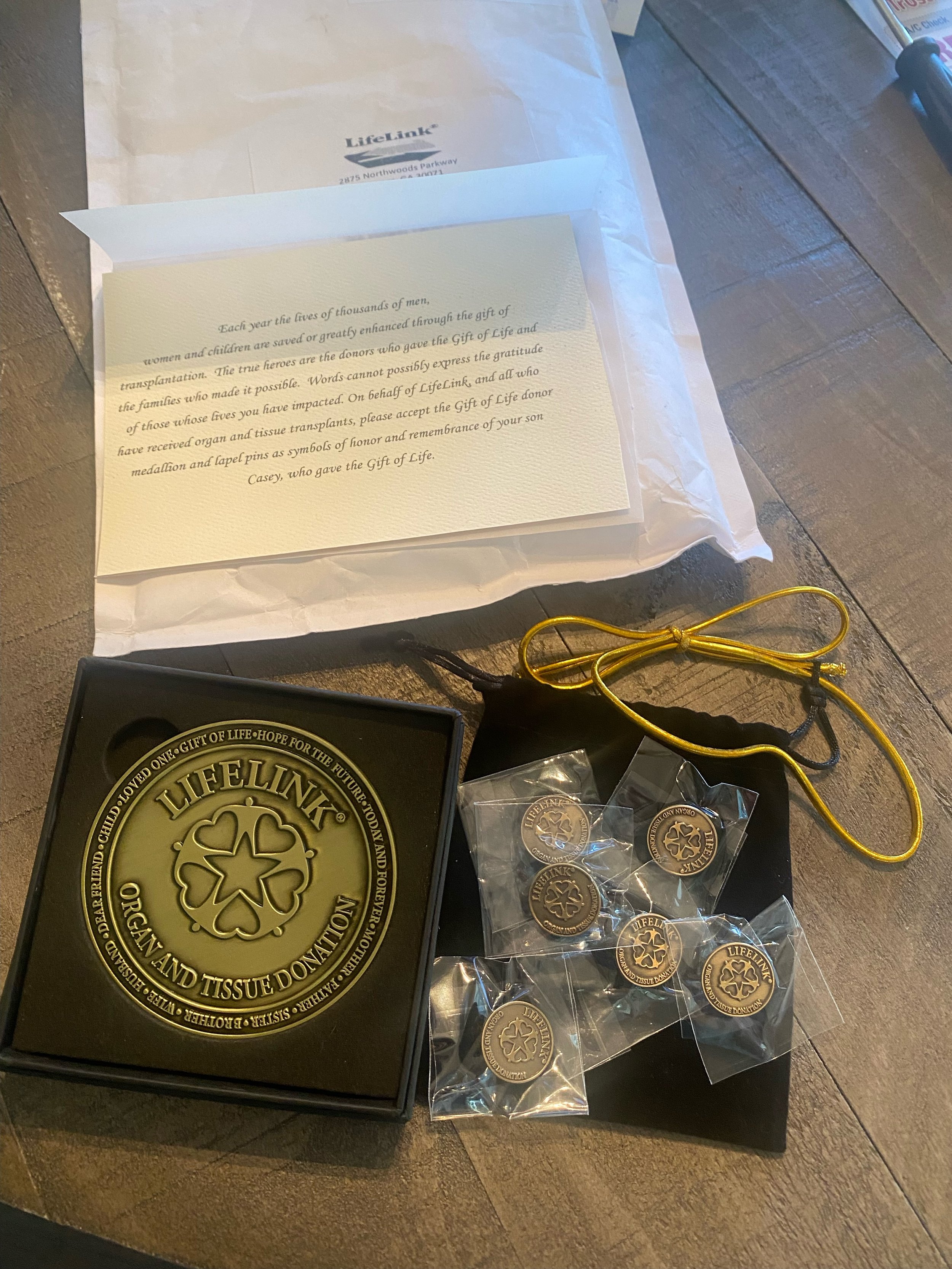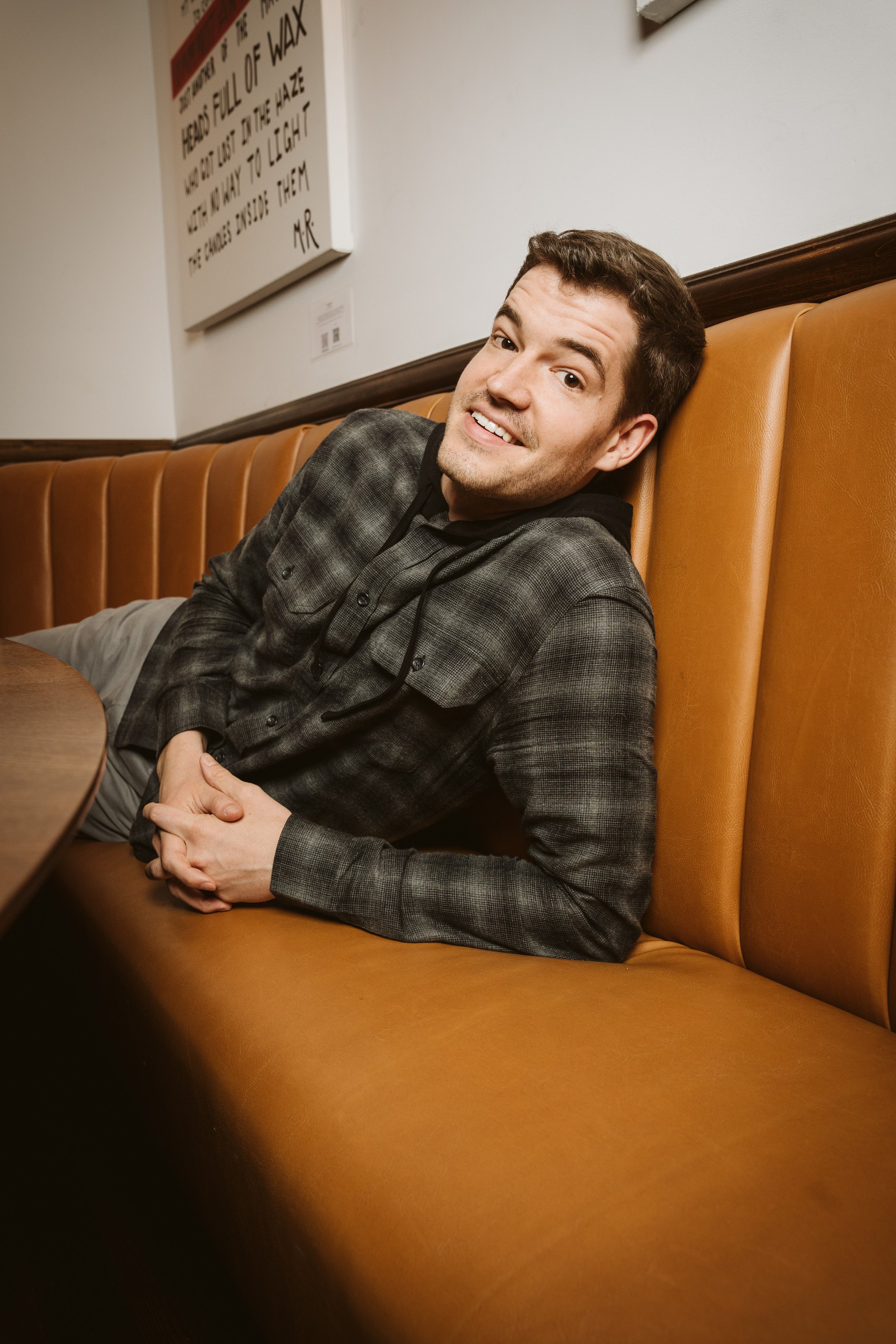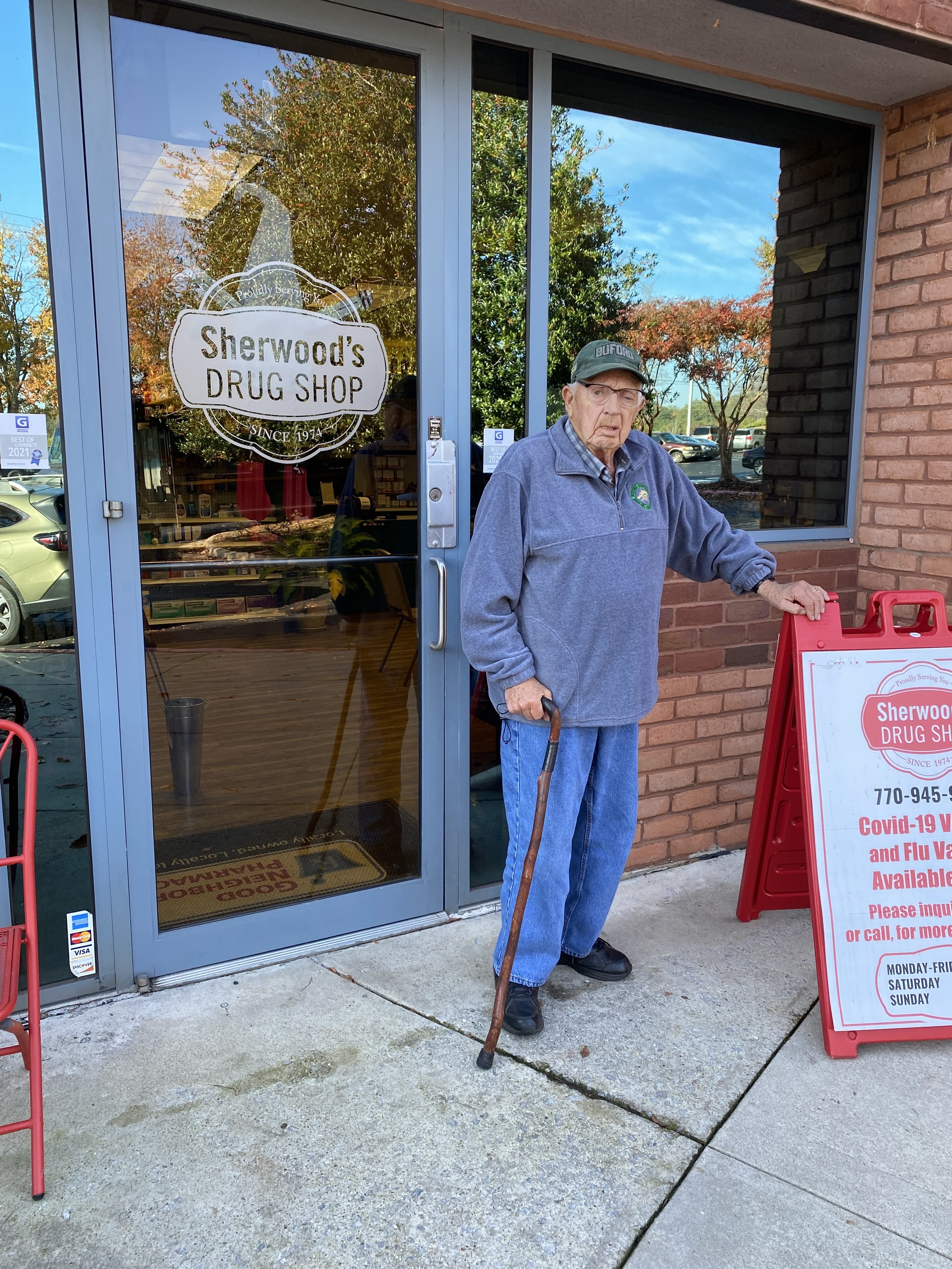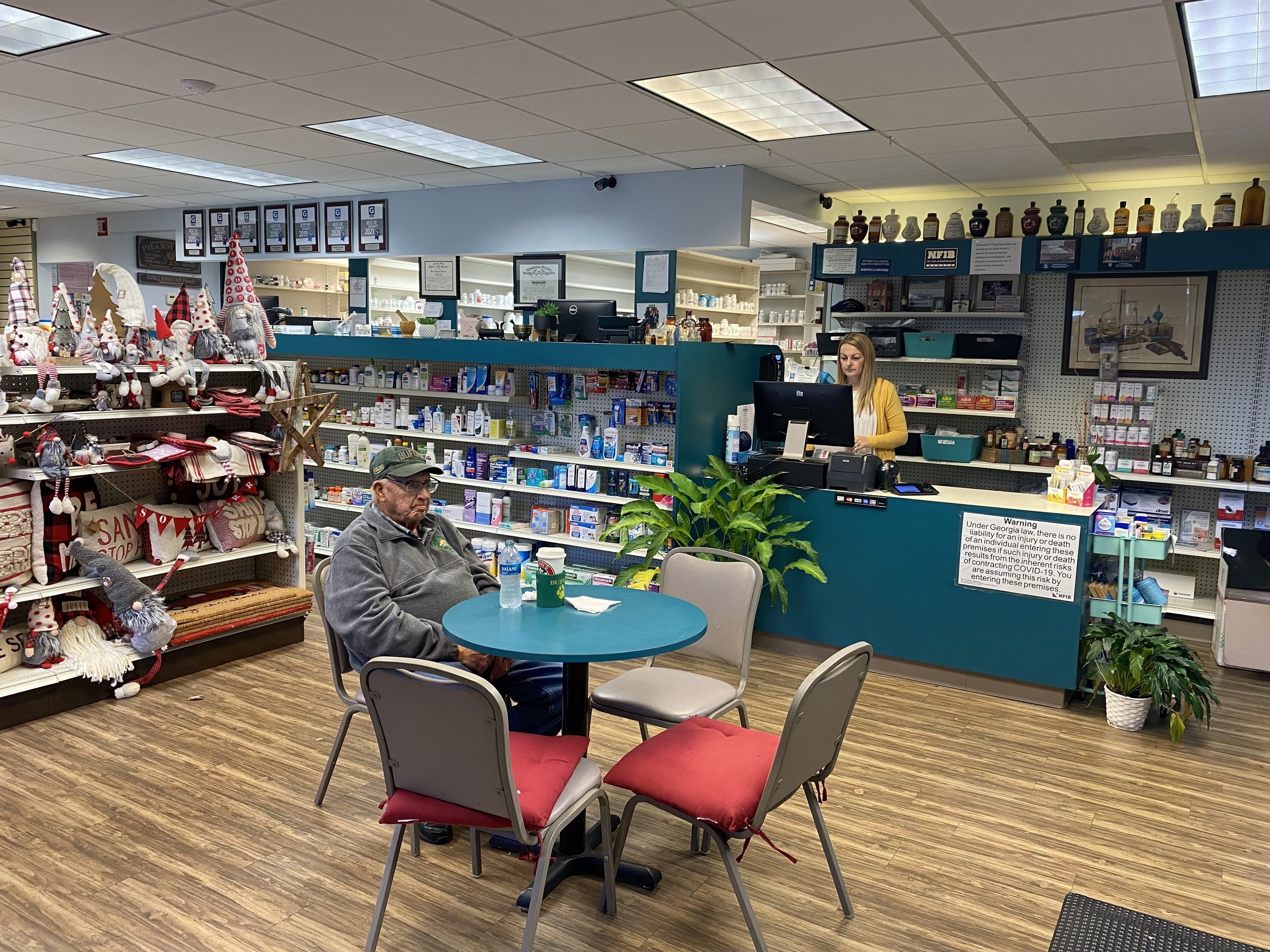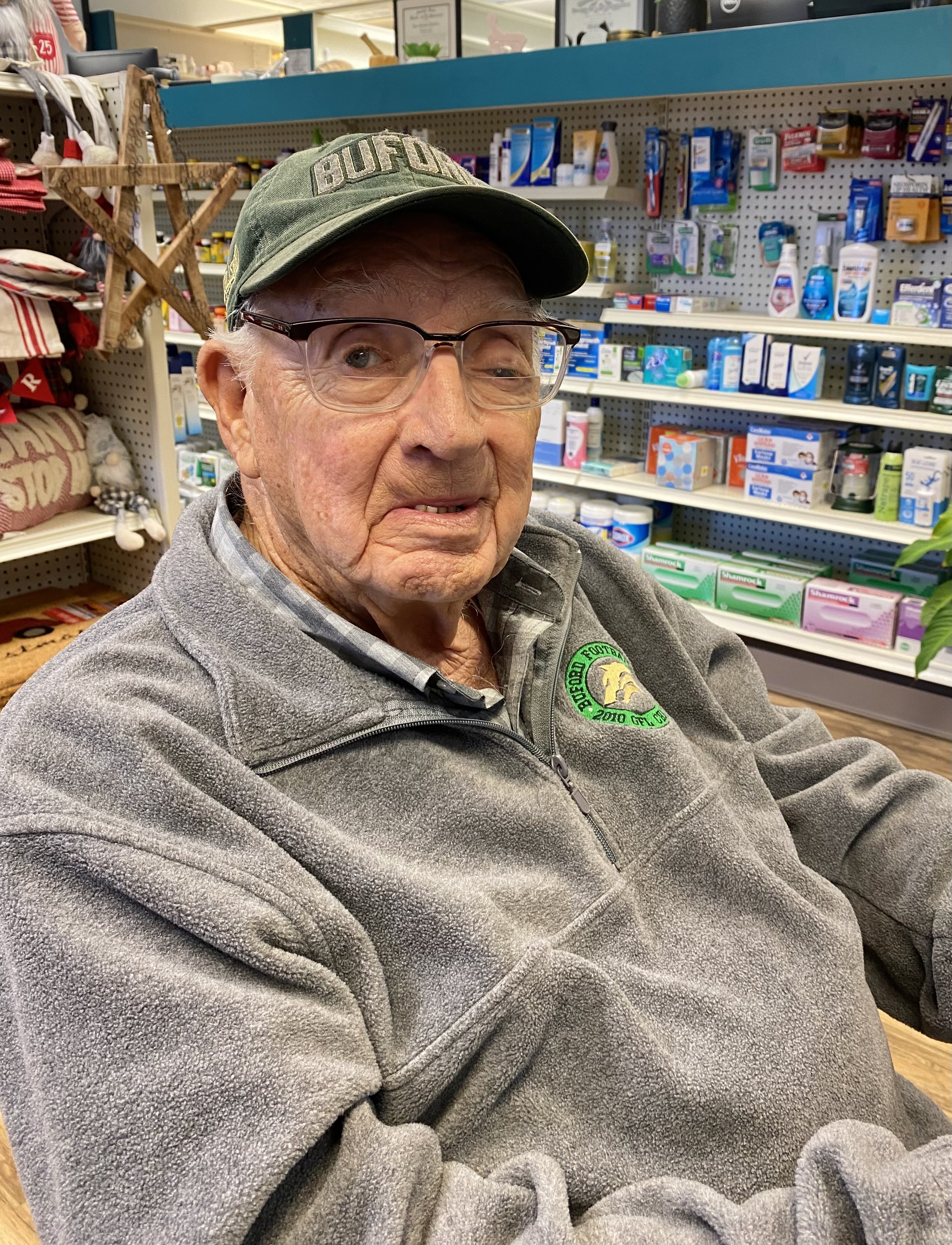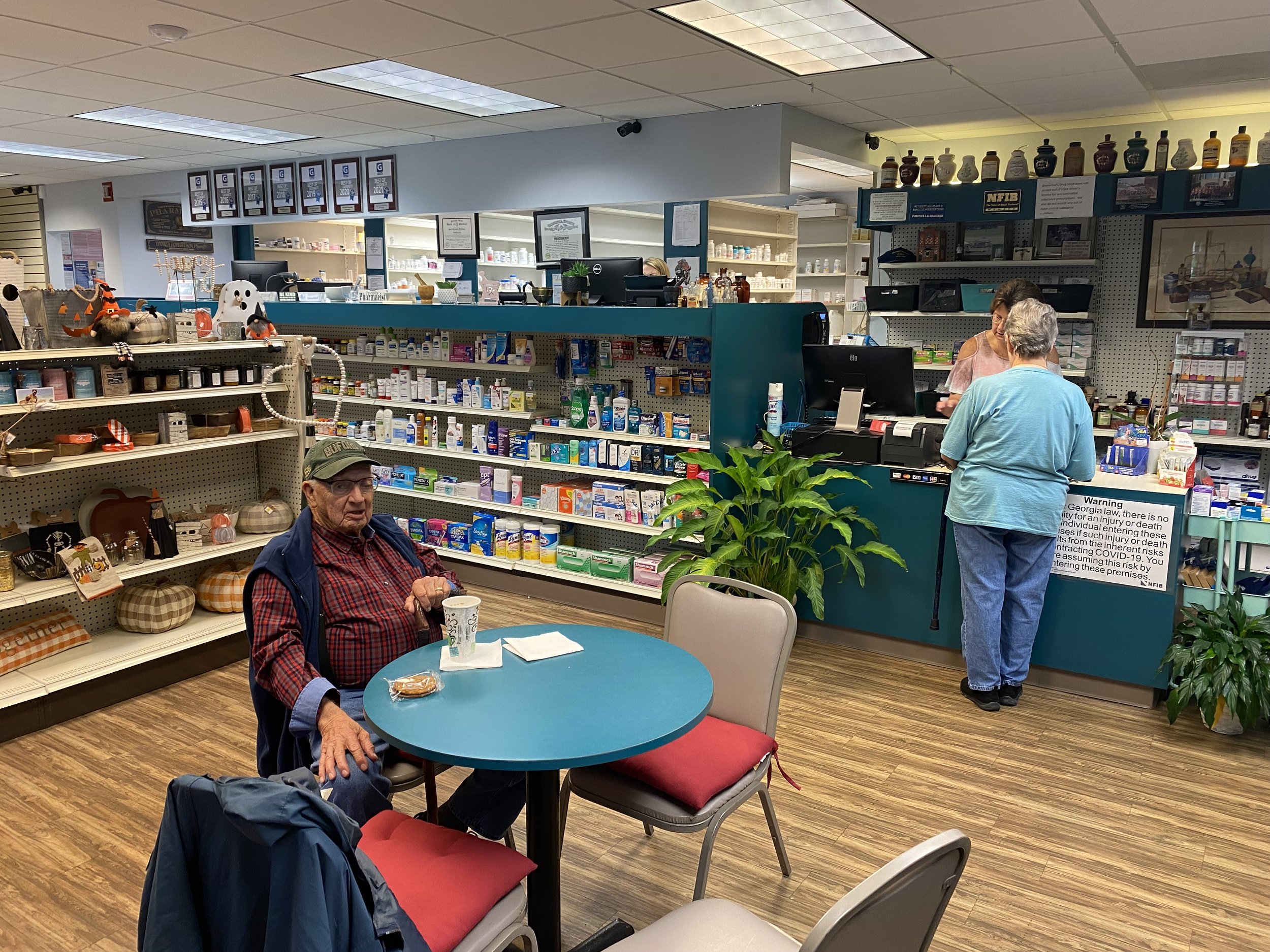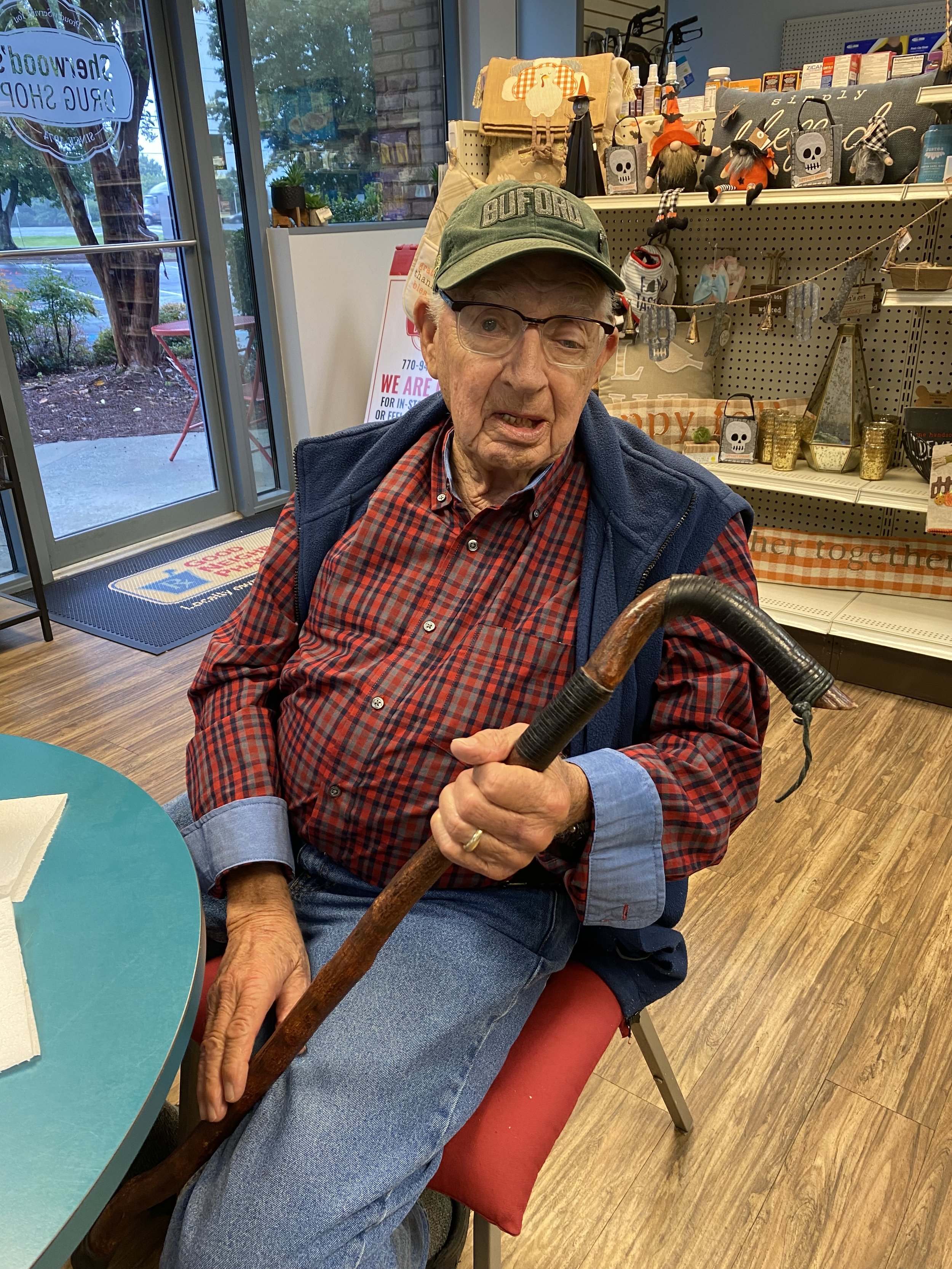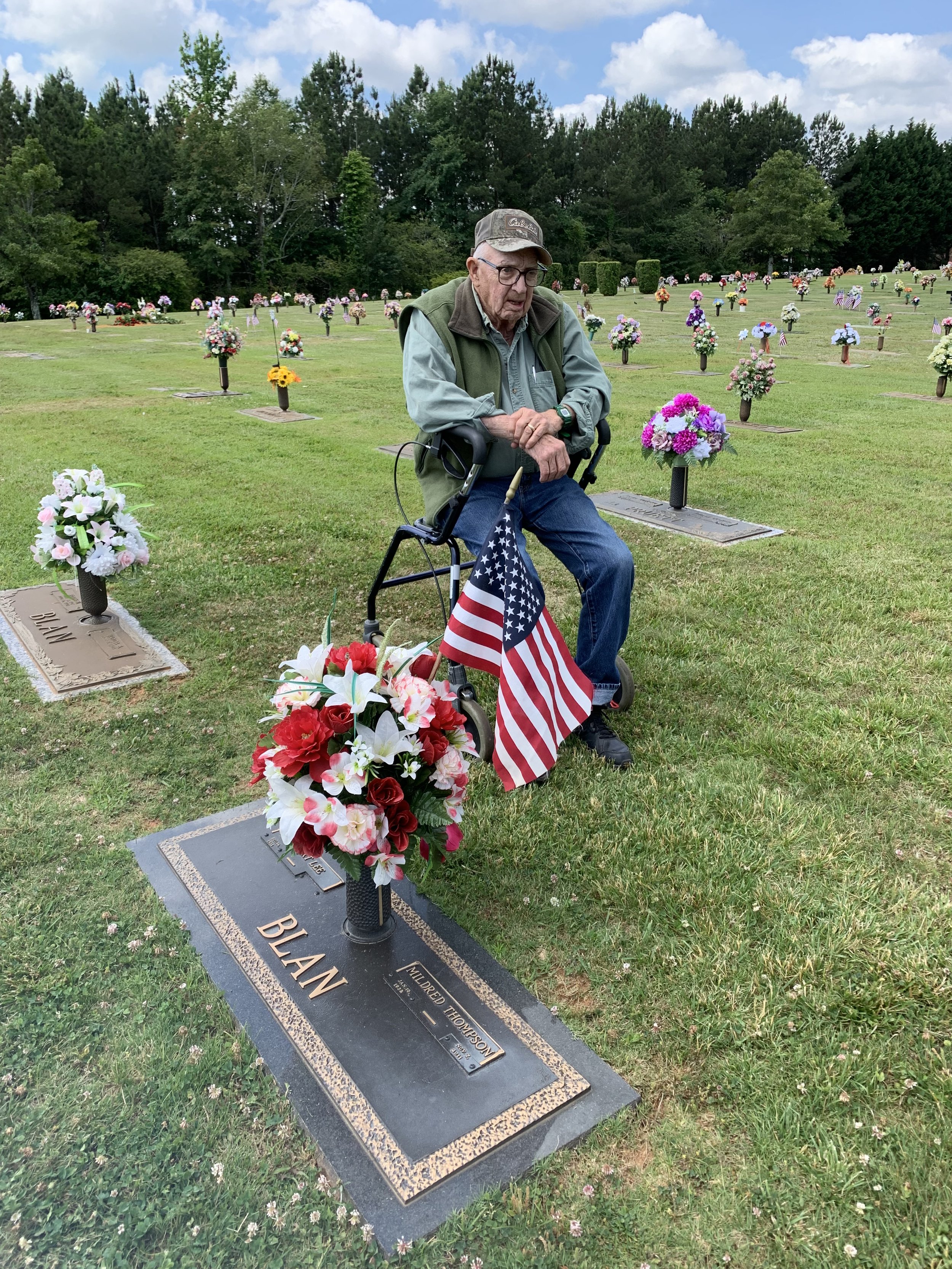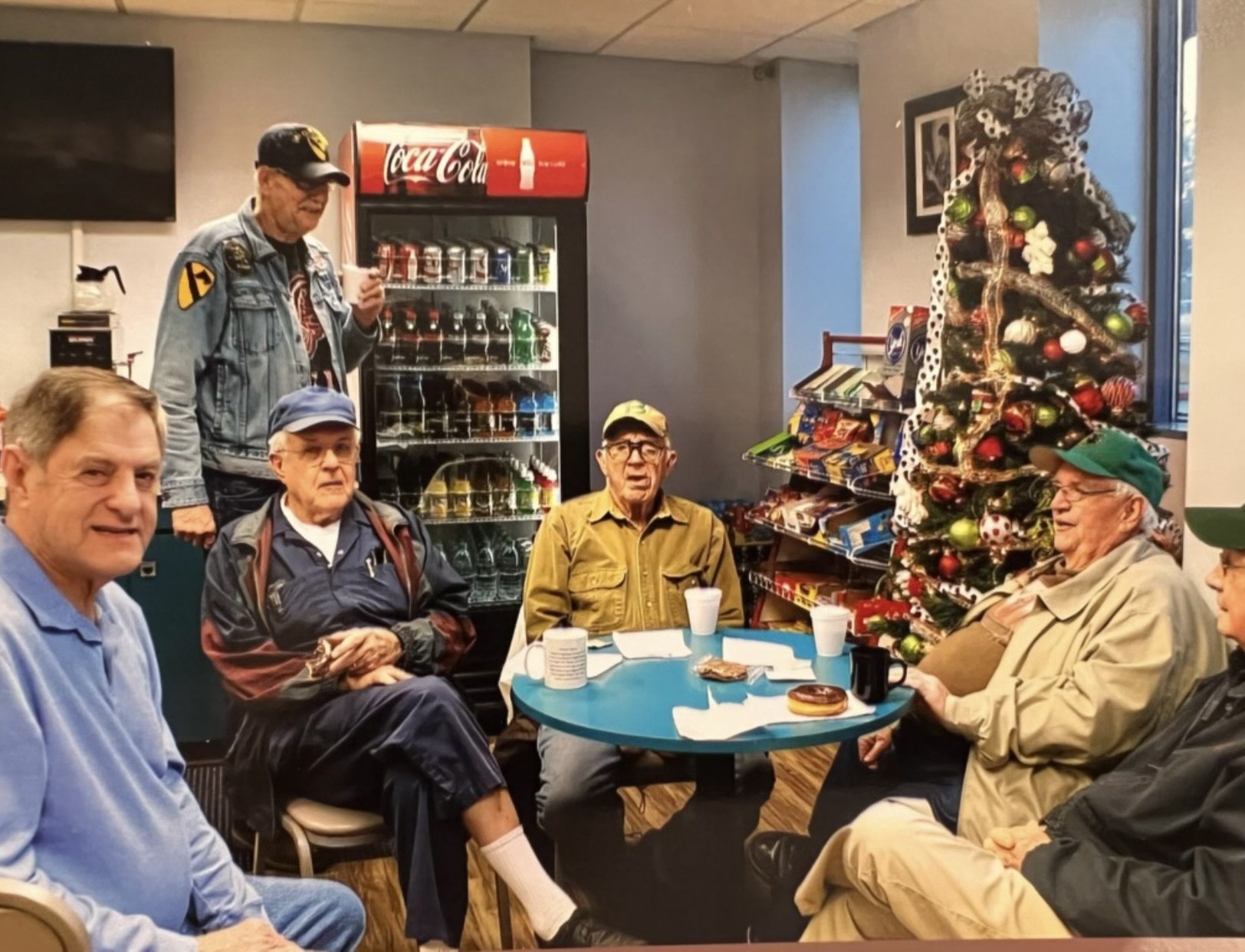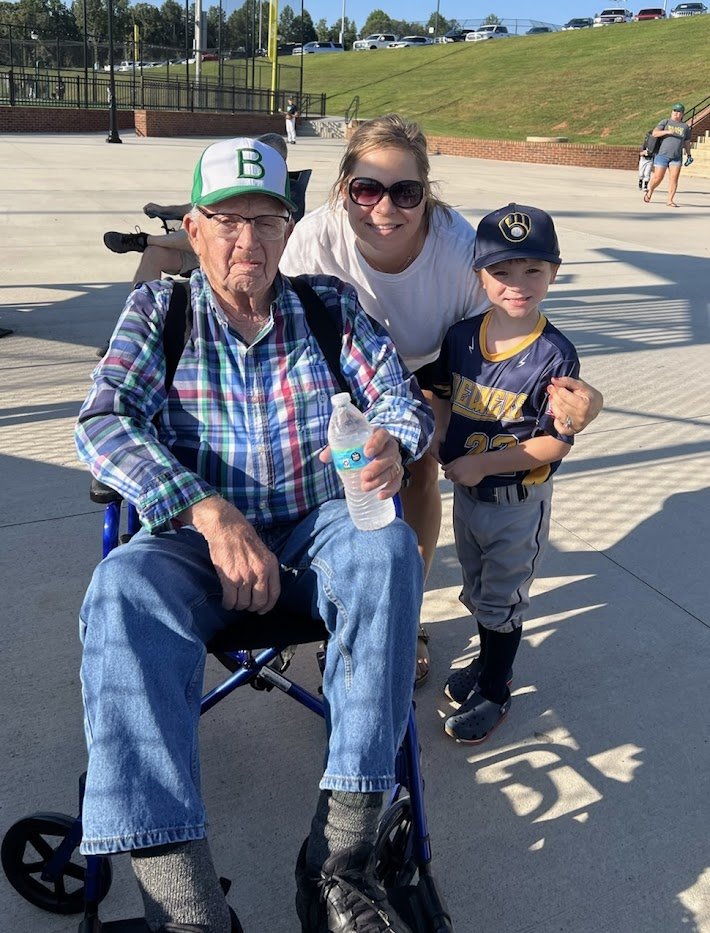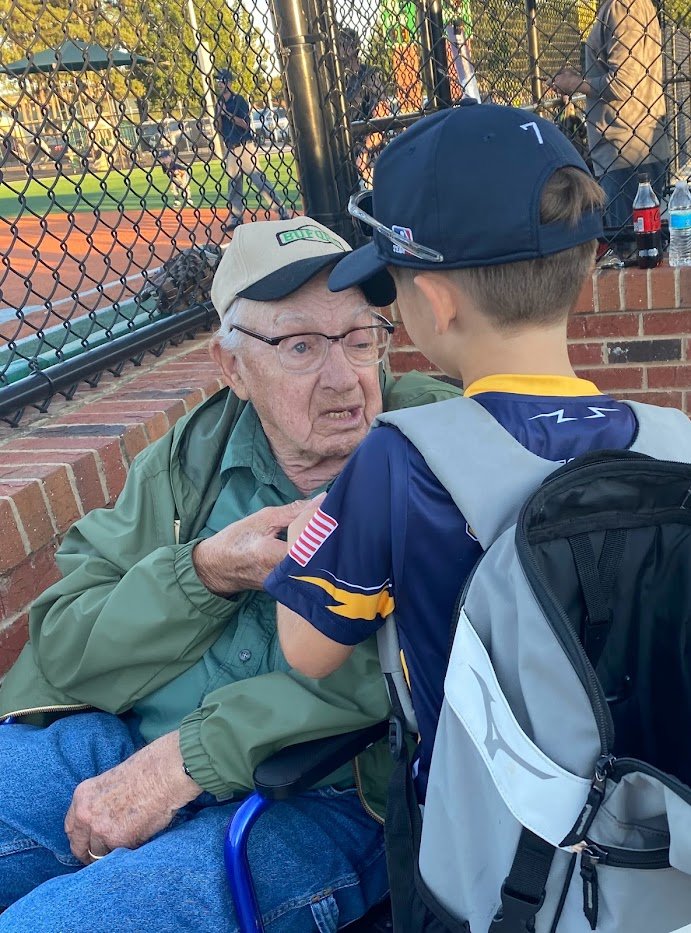The world outside keeps changing, but time stands still inside Sherwood’s Drug Shop in Buford. There, Robert Blan, 89, sits drinking his coffee every morning, the sole remaining member of a coffee club that has met at the pharmacy since the 1940s. This place holds memories of Blan’s life from boyhood to retirement, where loyalty, friendship and face-to-face interactions endured through ups and downs. Sherwood’s is where Blan feels most at home, where the good old days don’t feel so far away.
From soda fountain to coffee
Blan first became a regular at the pharmacy in 1942, when he was just 10 years old. It was called Simpson’s Rexall Drugs back then, located on Main Street in Buford, just up the hill from his family’s home on Park Street. The appeal was simple: “It had an ice cream counter,” he deadpans.
“I was allowed to walk up to the pharmacy all by myself, and I went nearly every day,” says Blan, seated at a table near the register, his arms crossed against his chest. “It was the place to be.”
With a nickel in his pocket and friends, like the Perkins brothers and Larry Crowe, by his side, Blan would stop by on his walk home from school.
“The space was long and narrow and always full of people,” says Blan, “There were four or five tables filled with men, and a wraparound counter where people sat on barstools. That’s back when they served sandwiches. Everyone in town had a charge account there.”
Blan would sit a spell, enjoying his Coca-Cola or ice cream. He’d get seconds, flip through comic books and occasionally buy one. When he got older, he traded his treats for coffee.
After high school, Blan joined the Army in 1950 but was discharged six months later for being partially blind, the result of an incident with a BB gun in high school. He married Mildred Thompson, a childhood friend, in 1955 and they had two daughters, Robin and Vinci.
For 36 years, Blan worked at Eastman Kodak, selling cameras, processing film and helping people solve technical issues. He was an avid photographer and voluntarily filmed football games for 30 years at Buford High School, his alma mater.
Throughout those years, the pharmacy remained a touchstone for Blan. He can’t recall exactly how it happened, but one day he took a seat with the group of men who regularly gathered there for coffee. He eventually began joining them every Saturday. They were friends and neighbors Blan had known most of his life, and they loosely referred to themselves as “the coffee club.”
Occasionally Blan would drop by in the afternoons, too, often with his little girl by his side.
“I used to wait on Dad to get home from work every day,” says Robin Blan. “He would change out of his dress clothes and take me to town. Our first stop was always Simpson’s. He’d buy me a Coke from the fountain with vanilla syrup and a Little Debbie Star Crunch. It wasn’t till I was an adult that I realized he did that to give Mom a break and get me out of her hair for an hour.”
A second home
In 1974, Donald Sherwood purchased the pharmacy from Simpson and changed the name to Sherwood’s Drug Shop. The coffee club was undisturbed by the change.
The club, whose members included the police chief, past mayors and members of the North Gwinnett Sportsmen’s Club, of which Blan was president for a few years, continued to spin tall tales and tell jokes. They’d discuss sports, share losses, confide troubles and celebrate victories like new grandbabies.
As the men retired, they began to come every day except Sunday when the pharmacy is closed. In 1986, the same year Blan retired, Sherwood moved the pharmacy to its current location, nestled inside a medical building off Nelson Brogdon Road in Buford.
There were two tables in the new location, and if you weren’t among the first eight to arrive, there were no more seats, so the men improvised. They loaded lawn chairs in the backs of their trucks and set them up in the lobby. They would arrive at 7 a.m. and stay until 10:30 a.m., drinking coffee, some smoking cigarettes, and occasionally getting shushed by Sherwood when they got too loud, or if their conversations got too colorful.
Half the men returned to the pharmacy for a second round at 1 p.m. when their wives were consumed with “Days of Our Lives.” They’d drink coffee and banter for a while, then head home for the 4 p.m. news.
The men were friends outside coffee club, too. Many spent holidays together, hunted together and shared family vacations in Florida and the Georgia mountains.
“We laughed a lot and talked ugly sometimes, too,” says Blan, his shoulders bouncing with laughter. “We made a little trouble sometimes.”
One year when it snowed, the men showed up for coffee club, only to find the pharmacy closed.
“We all drove over to Sherwood’s house and said we’d have our coffee there,” says Blan, smiling at the memory. “(Sherwood) borrowed his neighbor’s dump truck, drove us all over to the pharmacy, and opened it up, just so we wouldn’t sit in his house all morning.”
Changing hands, retaining heart
Despite the changes of location and ownership, the pharmacy’s quaint, small-town quality has endured.
When Danica Robertson was 19, she began volunteering a few hours a week at the pharmacy until she was hired part-time. She went full time after she completed her degree in pharmacy. Eleven years ago, when Don Sherwood died, Danica assumed ownership.
Now 44, Robertson did more than keep the name of the pharmacy, she inherited the coffee club, and she maintains the small-town feel. Like any good pharmacy, it’s stocked with an array of medications and general health and wellness products, but there’s also a mix of home goods, jewelry and knickknacks for sale that add warmth to the shop. A TV chats quietly in the background and the smell of freshly brewed coffee invites a deep inhale. Beside the coffee pot sits a tin that holds $1 bills rolled tight as pixie sticks, courtesy of Blan.
“I pay a dollar for the cookie, a dollar for the coffee and always roll it up,” Blan says with a mischievous chuckle. “One time I painted the bills with egg whites before I rolled ‘em. It took the guys forever to unroll those suckers to pay for our coffee.”
Robertson and her staff of three greet customers by name, both over the phone and in person, and they converse with them like family. How have you been feeling? Where have you been hiding? How’s John? A gray-haired lady at the counter says, “Thank you, hon,” for her medications. She pats Blan on the shoulder and hollers, “Y’all be good now,” as she walks out the door.
Blan sits alone at his table, surrounded by three empty chairs. His handcrafted hickory cane is perched beside him, and a hat emblazoned with a Buford logo sits atop his head. Without him asking, Robertson comes out from behind the counter and refills Blan’s cup. He nods, says “Thank you, ma’am,” and reaches his hand, where a gold wedding band still shines, for hers to give it a quick squeeze.
Everything keeps changing
Eleven years ago, Blan returned home from running errands to find Mildred laying on the floor. She was gone, taken by a heart attack.
“He took her loss incredibly hard,” says daughter Vinci Blan Edwards. “If not for his love of watching his grandkids play sports, the hunting club and coffee club, I feel sure he would’ve died from a broken heart.”
Every day when he leaves Sherwood’s, Blan goes to Broadlawn Memorial Gardens, no matter the weather, to visit his wife’s grave. He sits on a golf stool for up to an hour, swaps out the flowers and communes with his bride of 57 years. The two exchanged terse words only once, Blan recalls, and they were over his penny collection.
“She wanted me to roll them up and put them in the bank, and I didn’t want to,” says Blan with a shrug. “Everything else was easy.”
One by one, Blan has also said goodbye to members of the coffee club. Three of the men aren’t well enough to attend anymore and many — E.J., Quinton, Ray, David, Ben, Woody and more — have died. Blan attended all their services.
“It was customary back in the day when one of them died to send a wreath with a coffee mug attached on behalf of the club members. All the guys would chip in,” says Robertson. “When they started dying, it was too sad to look at two nearly empty tables, so now there’s just the one.”
In fall 2021, Robertson took a photo of Blan and fellow member David Buice. When she posted it on social media, her caption joked that the coffee club was accepting new members. Buice is now in an assisted living home. In August 2022, coffee club member Buddy Ehlert died, leaving only Blan.
“It’s lonesome being the last one. I miss them. We shared life together,” says Blan, as he strokes his arm and looks toward the floor. “I choose to keep comin’ though. It’s a habit, I reckon. And, of course, the pharmacists are my friends. I’ll keep comin’ long as I’m able.”
For a while, Blan wasn’t capable of showing up. In 2016, he was run over by a tractor. He nearly died and was in ICU for four weeks. Sherwood’s sent a box of large oatmeal crème pies to the hospital.
“He tells his doctor he eats oatmeal for breakfast,” says Robertson with a grin.
It took 10 months for Blan to fully recover from the accident, but he no longer drives. His daughters, who he lives with, help him maintain his routine. Vinci drops him off at the pharmacy on her way to work in the mornings and Robin, a retired teacher, picks him up two hours later.
“Most days someone will come in and sit with me for a bit,” says Blan. “Sometimes the folks are talkative, some are kind of shy, but I enjoy talking to all of them. Some days I may not talk to anyone but Danica or my other friends who work here.”
A prolific storyteller, Blan laces his fingers on the teal tabletop as he speaks of the old days with detail and enthusiasm. He recalls when he heard the Japanese had attacked Pearl Harbor, when the newspaper was delivered by steam engine, when his town was not yet paved and just had broad dirt roads. He loves to tell the story of the 1967 Mustang convertible he bought for $300. His wrinkled face holds the excitement of a boy’s at Christmas when he describes how he made that car shine and sold it 12 years later for $8,000.
“But anyhow, everything keeps changing,” says Blan. “I don’t like it, but I reckon you have to live with it.”
‘Better than I deserve’
Recently, there have been a few days when Blan did not make it to coffee club. He has slept in, likely due to new medication. He’s grumpy and disappointed when he wakes to realize he’s missed his beloved routine.
“One of those days I made a special trip to drive him by the pharmacy in the afternoon, not for coffee, but just so he could check in with the girls,” says Robin.
Vinci and Robin threw their dad an 80th birthday party at the pharmacy in 2012. There was coffee, of course, and breakfast for a crowd of 30. His 90th birthday, Dec. 16, is approaching, and plans are brewing for another celebration at the pharmacy, Blan’s home away from home.
“The girls here are always so nice to me,” says Blan. “They really feel like family. This place is special, the people more than the building.”
Robertson’s brown eyes brim with tears when she thinks of what the pharmacy would be like without the coffee club, without Blan.
“My whole working life has been here with all these men,” says Robertson. She turns so Blan can’t see her cry. “There was a time they’d be waiting on the bench by the door every morning when I arrived. I’ve looked forward to seeing them every day, and now if Robert is my last one…”
A customer walks into Sherwood’s, smiling as she waves at Blan and asks how he has been. Blan lights up at the greeting and says what has become his mantra.
“I’m better than I deserve.”
He takes a sip of coffee and smiles.


